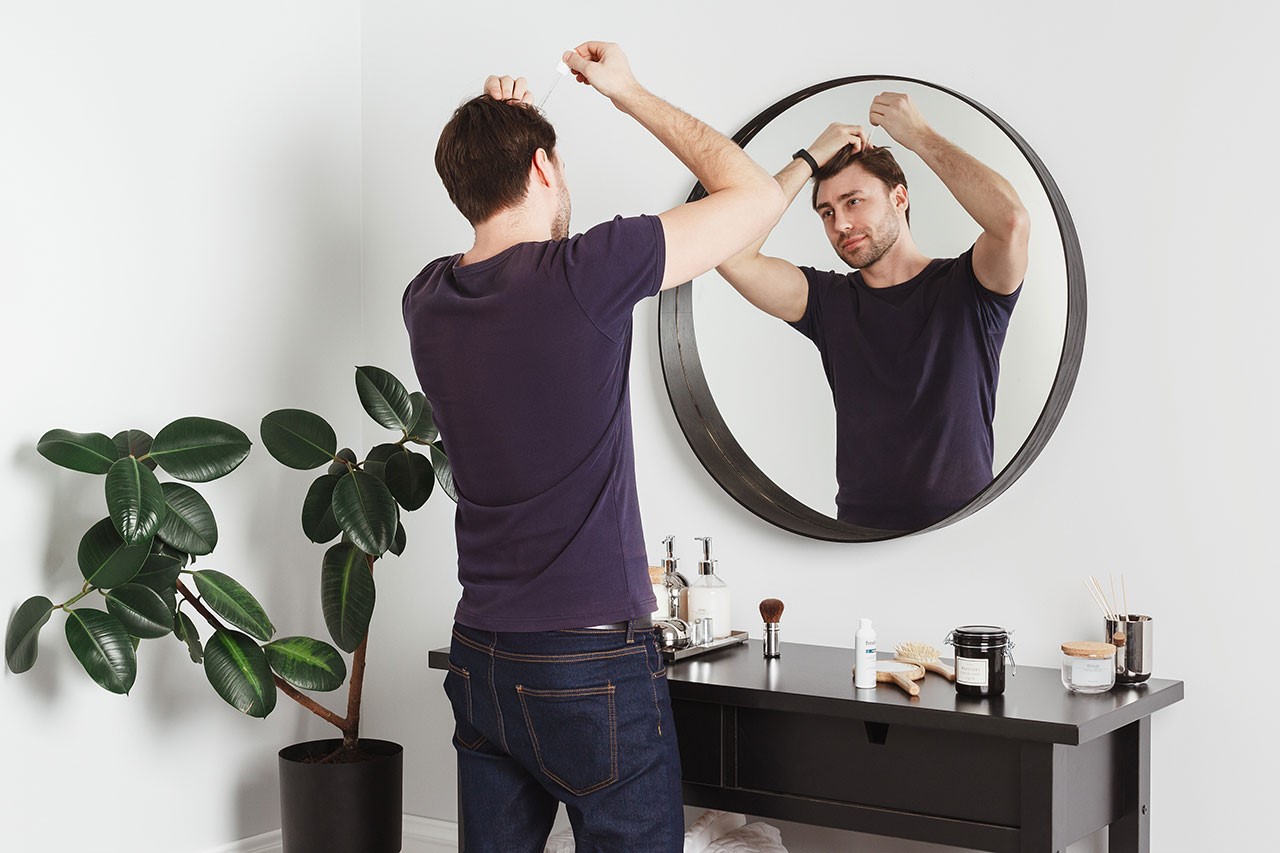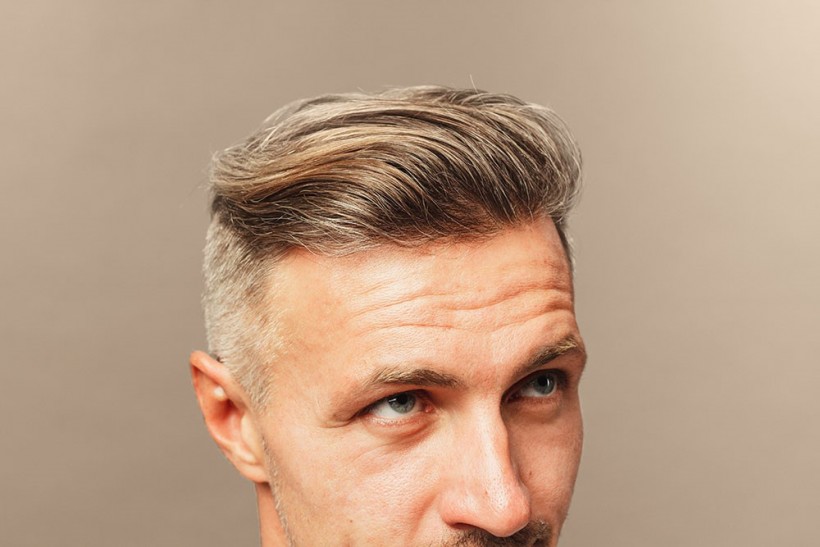
Finasteride is a hair loss treatment for hair loss that has become popular over the years for guys going through male pattern baldness. It's a clinically proven type of treatment and one of the most effective on the market. It works to prevent balding and promotes hair regrowth for up to 90% of its users.
There are currently two various forms in which Finasteride is available. It can be taken in tablet form, which has been on the market for quite some time. However, a more recent innovation for Finasteride is its liquid 'topical' solution. We'll get into the differences between the two treatment forms in this article and help you choose the best option. But first, let's take a look at how Finasteride works.
Finasteride: an effective product for hair loss
While you may have heard that Finasteride is effective at combating balding, you might not know how exactly it does this.
The hormone dihydrotestosterone (DHT) is an androgen or otherwise known as a sex hormone. It helps men develop their typically "male" sex characteristics (such as body hair). Studies that took a closer look at hair loss have found that DHT is also primarily responsible for Male Pattern Baldness (MPB). MPB is mostly experienced by men over 50 but can affect younger guys, too.
So what does Finasteride do? When using this treatment helps to reduce the amount of DHT found in the body. Lowering these levels results in less hair loss and even gives the body time to re-grow some lost hairs.
Currently, there are two kinds of Finasteride solutions on the market. The first is the most well-known form; Finasteride tablets. A more contemporary way to treat hair loss with Finasteride is a topical cream applied directly to the scalp. This has a lot of other benefits, which we will explore later.
Finasteride Tablets: a staple for hair loss treatments
The most known form of Finasteride is in tablets. Users take one pill a day to help combat the effects of hair loss. While it's known to be a highly effective treatment, side effects need to be taken into account when using these pills.
There are some dermatological side effects that a small percentage of men have been known to experience when using the tablet form of treatment. Most talked about are rashes and swelling of the skin on the scalp, but there are sexual side effects too; some men have said to experience erectile dysfunction while on this treatment plan. All this makes a lot of men think twice before deciding to take Finasteride tablets. Despite this worry, it's important to point out that over 96% of men do not experience any of the known side effects from the treatment.
This is where the newest form of Finasteride can come in handy. It has the benefits of the tablets but a lot less risk of the side effects most guys fear.
Liquid solution for hair loss: Topical Finasteride

What does topical mean?
Topical is the term used for everything that can be applied directly to the skin. It's either a liquid, gel or cream that you administer to the area you'd like to treat. Finasteride now has this form and all studies done on this product so far make it a very effective treatment option in the battle against balding.
Topical Finasteride has the benefits of the oral solution, and far less men who use the topical treatment report side effects than those who take Finasteride tablets.
Powerful or not? Effectiveness of Topical Finasteride
Studies that have been done so far on the effectiveness of Topical Finasteride have promising results.
This study, conducted in 2009, compares Finasteride gel against the tablet treatments. It says that "the therapeutic effects of both Finasteride gel and Finasteride tablets were relatively similar to each other". Meaning that both the patients in the tablet group and the topical solution group showed significantly reduced hair loss.
Another study done in 2019 confirms this and adds that "there may be a therapeutic potential for topical FNS in the treatment of AGA, while minimizing unwanted systemic side effects associated with oral use." Confirming the earlier study and adding that patients experienced less side effects on the topical solution.
Earlier we talked about how topical Finasteride lowers the levels of DHT. A study from 2014 mentions that "Plasma DHT was reduced by 68-75% with use of topical FNS and by 62-72% with systemic administration." Although results weren't inconclusive, it can be said that, in some cases, the liquid solution can be more effective than the oral one.
What is the best possible product for you?
Topical Finasteride seems to be a very good option if you want the same (or even better) results and less side effects. If you're curious to try out the effects of the liquid form of treatment for yourself, take at Freshman's Topical Finasteride solution, which is available online at an affordable cost.
Freshman's formula is scientifically-proven to combat hair loss, and is free from alcohol and propylene glycol, which makes it gentle on your scalp. Once you're approved online by one of Freshman's registered clinicians, your hair loss treatment will be shipped to you on the next working day.
* This is a contributed article and this content does not necessarily represent the views of techtimes.com









